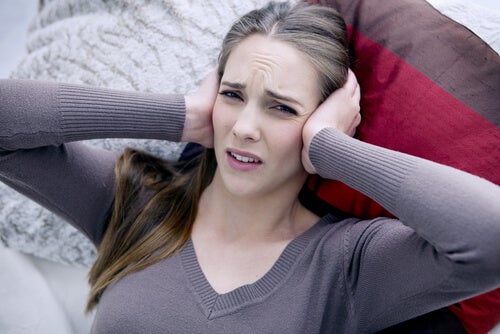Artificial intelligence, just around the corner
п»ї<title>Misophonia: the hatred of certain sounds</title>

To learn about misophonia and what it entails, let's read this story: "I've been like this all my life, it's horrifying. Riding on any means of transportation completely freaks me out. If I don't have earplugs or music with headphones, I get very nervous and irritable. Listening to the computer keyboard, eating chewing gum, biting my fork while eating, slurping my soup... endless. I only dream of one day being able to be calm and not having to be alone or with my helmets, of not imitating or looking down on people who do it... I can't have a steady partner, it's normal to end up hating a person like me".
What you have just read is a true story of a person suffering from misophonia. But then, what is misophonia? Basically, misophonia is defined as a high sensitivity (hypersensitivity) to a certain type of sounds.
"The reaction is anger for the most part, not disgust. The dominant emotion is anger. It seems like a normal response, but then it occurs in excess."
-Dr. Sukhbinder Kumar, MD. University of Newcastle.
This is one of the conditions involving low tolerance to sound, along with hyperacusis and phonophobia. In people with misophonia the body reacts in a certain way when exposed to certain sound stimuli.
The word "misophonia" was coined by physicians Pawel Jastreboff and Margaret Jastreboff in 2000. This term is derived from the Greek "misos", meaning aversion and "fonГ©", meaning sound. Thus, misophonia can also be defined as "selective sensitivity to sound".
What really is misophonia?
As we have already mentioned, misophonia consists of a decrease in tolerance to certain sounds. The sufferer cannot tolerate hearing certain specific sounds. What for most people are background sounds, for others are deeply unpleasant sounds.
Noises such as chewing, the clinking of cutlery or the drumming of fingers become unbearable for people suffering from misophonia. Some of the sounds that cause this discomfort have a relatively low intensity, on the order of 40 to 50 decibels.
"Caffeine and alcohol worsen the condition, which is a disadvantage for these patients."
-Dr. Sukhbinder Kumar, M.D.
This animosity to sounds is amplified if the people who produce them have sentimental ties to those who produce them. For example, if they belong to the same family or are close friends. A Baltimore elementary school teacher, Meredith Rosol, diagnosed with misophonia, says she no longer eats with her parents. She only eats with them if she puts an earplug in her ears.
One of the problems we face with this disorder is that it is difficult to diagnose. Therefore, it is also complicated to find an effective treatment: until recently it had not been classified as a disease.
"These patients become saturated when they hear the sounds that trigger the reaction."
-Dr. Sukhbinder Kumar, Ph.
Is misophonia a psychological disorder?
Some argue that misophonia is not a psychological disorder, it is not a phobia. It would then be a neurological condition. This neurological disorder is probably located in certain structures of the central nervous system.
Where exactly this "very visceral" reaction arises from remains unknown. It may have something to do with damage to the medial prefrontal cortex, similar to what occurs in another medical condition called tinnnitus. Tinnitus is a phantom ringing or other noise in the ear. It is a perception commonly caused by damaged hair cells in the cochlea.
Symptoms of misophonia
People suffering from this disorder or disease feel discomfort, anger, rage, panic, fear... They may even imagine attacking the person producing the sounds. The sounds can be as normal as those produced by eating, drinking, slurping, breathing, coughing, etc.
These people can also be bothered by other types of repetitive sounds, such as chewing gum, making bubbles with it, the crunching of bones, etc. These people show anxiety and avoidance behaviors towards the people who produce them. In some very severe cases, the person may become so intolerant that violent behavior towards objects, people or animals involved may occur.
People with misophonia can develop a real obsession with these noises. Then the hypersensitivity spreads and an intolerance towards those people and/or situations where those sounds are produced is produced.
I feel there is a threat and I have the desire to attack, I go into "fight or flight" mode."
-Mary Jefferson, person affected by misophonia-.
Psychological problems resulting from misophonia
People suffering from misophonia can develop serious psychological problems. They can be aggressive or decide to avoid situations that precede or motivate their discomfort. Thus, they can become isolated and feel a deep loneliness.
Because there are few resources to treat their condition, their social integration is not favored. They only have the possibility of using earplugs or headphones to play music. In other words, they are designed to prevent them from hearing the sounds that cause discomfort, but not to solve the root of the problem.
"Anyone who eats potato chips is always going to bother me. The rustle of the bag is enough to trigger the reaction. I immediately think 'Oh my gosh, what is that sound? I need to go away or stop it."
- Paul Clark, sufferer of misophonia-
How common is misophonia?
We do not know the prevalence of misophonia. Sufferers suggest that it is more common than is recognized. In patients with tinnitus, a prevalence of up to 60 percent is reported.
And hearing problems are more common than we think. Many times there is an adequate treatment, but other times it is more difficult to establish an effective treatment, especially when the problem is hypersensitivity to certain sounds. This is because physical and psychological factors interact in this type of problem.
"It is still unclear how common the disorder is, as there is no clear way to diagnose it and it has only recently been discovered."
-Dr. Sukhbinder Kumar, M.D.
How is misophonia treated?
To date, there is no known cure for misophonia. Some patients have found cognitive behavioral therapy and tinnitus retraining therapy helpful. In others, these interventions have not been as effective. Many physicians are unaware of the existence of this disorder because it has only recently been recognized. This means that in many cases it is still undiagnosed.
"One idea is to use low levels of electricity directed through the skull, which is known to help adjust brain function."
-Dr. Sukhbinder Kumar, M.D.
There are certain psychological and hypnotic treatments that have also proven effective in some patients, but in general it cannot be said that there is a cure for this condition. Pending more appropriate treatment, affected individuals remain doomed to live in a state of anxiety or isolation if they choose to avoid the sounds they cannot stand.
Bibliographic references:
HerrГЎiz C. (2005). Pathophysiological mechanisms in the genesis and chronification of tinnitus. Acta Otorrinolaringol Esp 2005; 56(8):335-42.
HerrГЎiz Puchol C, HernГЎndez CalvГn FJ. (2002) Tinnitus: an update. Barcelona: Ars MГ©dica.
You might be interested in...
Synesthesia: I hear colors and see sounds.
Synesthesia is a phenomenon that allows us to experience different visual, auditory and tactile stimuli accompanied by an extra sensation.
modafinil uk buy
When rules control us without knowing them
How to be an independent person?
7 keys to healthy aging
6273afa
